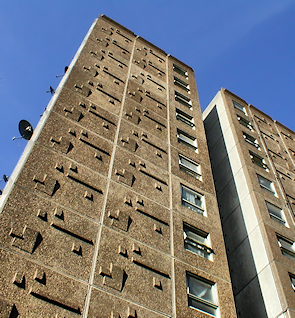Stonebridge
Stonebridge, Brent
A troubled but improving council-built estate and its vicinity, situated north-west of Harlesden

The estate’s name derives from the stone bridge of 1745 that carried the Harrow Road over the River Brent. Until very late in the 19th century this was the site of Stonebridge Farm and of Willesden’s first sewage works but it was then rapidly built over, although some earlier large houses survived for a while. After the First World War Willesden council built houses west of Brentfield Road as part of its response to Lloyd George’s call for ‘homes for heroes’.
During the 1950s the council planned a massive redevelopment covering almost 100 acres of Stonebridge. More than 2,000 units were built, mostly in high-rise blocks, the first of which opened in 1967. Many existing streets were erased, together with the shops on Hillside. Despite the council’s good intentions, the Stonebridge estate soon proved flawed in its design and execution, and residents felt that little interest was shown in their welfare. The body of elderly tenant John Sheppard was discovered in 1993 after he had lain dead in his flat for three years.
The Stonebridge Housing Action Trust took over management of the estate in 1994 and has done its best to make improvements, replacing some of the blocks with less austere terraced housing as part of a multi-million pound effort to enhance the quality of life here.
The Fawood Children’s Centre opened in 2005. Designed by Will Alsop, it is one of the most striking buildings of its kind in London.
Stonebridge provided the setting for the Channel 4‑backed film Babymother (1998), a largely affirmative black musical by Julian Henriques with a cast of local people.
